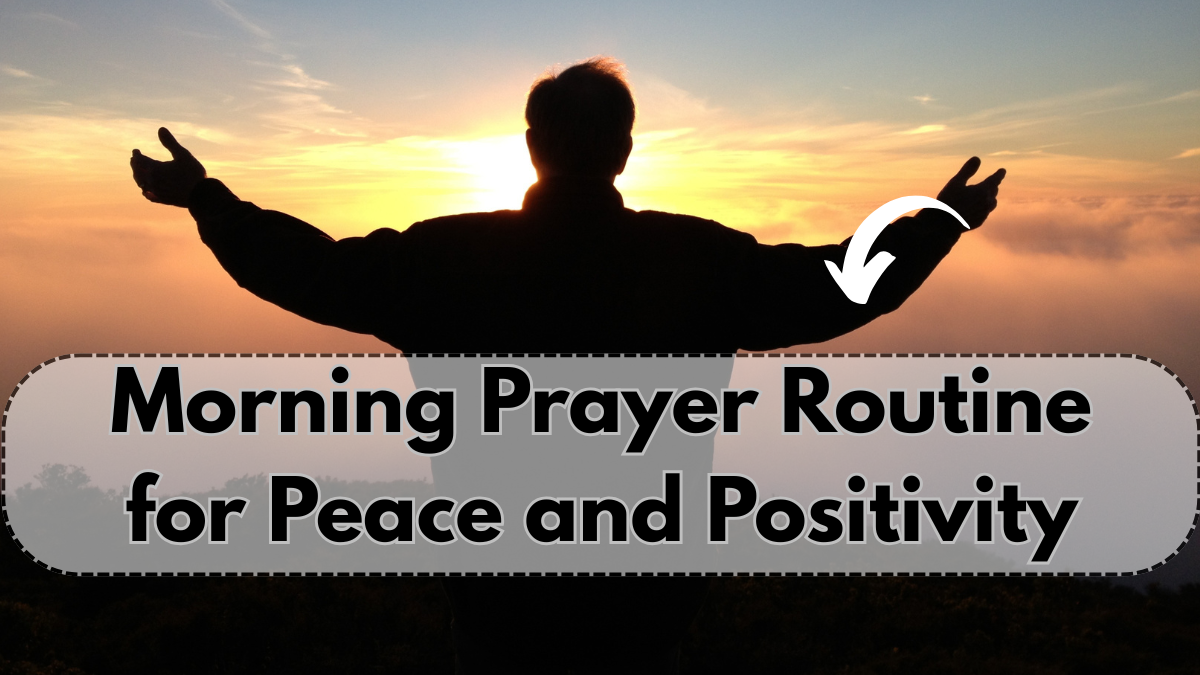Starting the day with a morning prayer is a time-honored tradition in Hinduism that sets a peaceful and positive tone for the hours ahead. This ritual helps quiet the mind, align the spirit, and invite blessings into daily life. For beginners, a simple yet meaningful routine can make all the difference in cultivating positivity and focus.
Whether you are new to Hindu rituals or looking to refresh your practice, this guide introduces a gentle morning prayer routine that anyone can adopt. By reciting sacred shlokas, offering gratitude, and performing small rituals, you open the door to spiritual calm and energetic balance.

The Importance of a Morning Prayer Routine
Morning is considered an auspicious time in Hinduism, when the environment is calm and the mind is fresh. Engaging in prayer at this hour helps connect with the divine and prepares you mentally and emotionally for the day.
Benefits include:
-
Invoking inner peace
-
Increasing focus and mindfulness
-
Cultivating positivity and gratitude
-
Strengthening spiritual discipline
These Hindu rituals create a protective and empowering atmosphere for daily challenges.
Step 1: Create a Clean and Quiet Space
Begin by preparing a dedicated area for your morning prayer. This can be a small altar with pictures or idols of deities, fresh flowers, and a clean cloth.
Tips:
-
Light a diya or incense stick to invite calmness
-
Keep the space clutter-free and serene
-
Use natural light or a soft lamp
A peaceful setting enhances the spiritual energy of your routine.
Step 2: Begin with a Simple Meditation or Silence
Before starting prayers, spend a few minutes in silent meditation or mindful breathing. This helps settle the mind and center your awareness.
-
Sit comfortably with a straight spine
-
Take deep, slow breaths
-
Focus on the breath or a calming mantra like “Om”
This quiet moment prepares your mind for morning prayer.
Step 3: Recite Powerful Morning Shlokas
Reciting sacred shlokas aloud or silently invites divine blessings and purifies your energy. Some easy and effective verses include:
-
Gayatri Mantra: A powerful invocation of light and wisdom
-
Maha Mrityunjaya Mantra: For protection and healing
-
Shanti Mantra: To invoke peace within and around
Repeat these mantras 3-5 times with devotion and clarity.
Step 4: Offer Gratitude and Prayer
Express thanks for the new day and seek guidance for challenges ahead. This can be a spontaneous prayer or a simple formula like:
“I offer my day to the divine. May I act with kindness, wisdom, and courage.”
Gratitude increases positivity and invites grace.
Step 5: Conclude with Aarti or Lighting the Diya
Ending your morning prayer routine with the waving of a lit diya (lamp) or performing a simple aarti brings closure and elevates the spiritual energy.
-
Circle the diya gently in front of the deity or altar
-
Visualize the light removing darkness from your life
-
Feel connected to divine energy
This ritual seals your prayer with sacred intent.
Sample Morning Prayer Routine
| Step Number | Action | Purpose | Approximate Time |
|---|---|---|---|
| 1 | Prepare clean prayer space | Create sacred environment | 2-3 minutes |
| 2 | Meditation or silence | Calm and focus the mind | 3-5 minutes |
| 3 | Recite morning shlokas | Invoke divine blessings | 5-7 minutes |
| 4 | Offer gratitude and prayer | Connect with inner positivity | 2-3 minutes |
| 5 | Aarti or light diya | Seal the prayer with energy | 2 minutes |
FAQs
Why is morning prayer important in Hinduism?
Morning prayer aligns your mind and spirit at the start of the day, bringing peace and positivity. It is an auspicious time for connection with the divine.
Which shlokas are best for morning prayer?
Commonly recited shlokas include the Gayatri Mantra, Maha Mrityunjaya Mantra, and Shanti Mantra for wisdom, protection, and peace.
How long should a morning prayer routine take?
A basic routine can be completed in 10-15 minutes, but it can be extended as per individual preference.
Can beginners follow this routine?
Yes, this routine is simple and suitable for beginners looking to establish a meaningful morning prayer habit.
What is the significance of lighting a diya during prayer?
Lighting a diya symbolizes the removal of darkness and negativity, inviting divine light and energy into your life.
Click here to know more.
